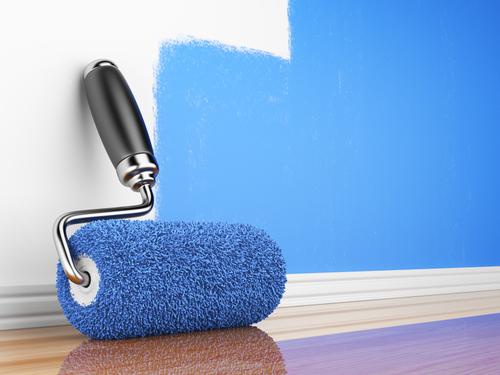Epoxy Flooring Dubai

What is the Installation Process for Epoxy Flooring in Dubai?
Epoxy flooring has become a popular choice in Dubai for both residential and commercial projects because of its durability, sleek design, and resistance to harsh climates. From luxury villas in Palm Jumeirah to industrial warehouses in Jebel Ali, epoxy flooring is being widely installed due to its versatility and long-lasting appeal.
But while epoxy flooring is admired for its finished look, the secret to its strength lies in the installation process. A poorly installed epoxy floor may peel, crack, or bubble within months, while a properly installed one can last 10–20 years. If you’re considering epoxy flooring in Dubai, it’s important to understand how the installation process works.
Step 1: Surface Preparation
The first and most critical step in epoxy flooring installation is preparing the concrete base. Epoxy must bond directly to clean, porous concrete, so the surface must be free of dirt, oil, grease, and existing coatings.
-
Cleaning: Contractors start by sweeping, vacuuming, and washing the floor to remove dust, sand, or debris.
-
Degreasing: Any oil or chemical stains are removed using industrial cleaners.
-
Repairs: Cracks and holes are filled with epoxy patching material to create an even surface.
-
Grinding or shot blasting: Special machines grind the concrete or blast it with abrasives to roughen the surface, ensuring better adhesion of the epoxy coating.
In Dubai, where sand and dust are common, surface preparation is especially important to prevent peeling later.
Step 2: Moisture Testing
Before applying epoxy, contractors perform a moisture test. Dubai’s climate can lead to high humidity, and trapped moisture beneath the floor may cause blistering or delamination. If moisture is detected, a moisture barrier primer is applied to protect the coating.
Step 3: Applying the Primer
A primer coat is applied to help the epoxy adhere to the concrete surface. The primer also seals the floor, preventing air bubbles from forming during the curing process.
-
The primer is rolled or brushed evenly across the floor.
-
It is left to cure for 6–8 hours, depending on product specifications and climate.
Primers also improve the final finish, ensuring a smooth, glossy appearance.
Step 4: Mixing and Applying the Epoxy
Epoxy is a two-part system: resin and hardener. These components are mixed together just before application. The mixture must be applied quickly because it begins curing within a limited timeframe (often 30–40 minutes).
-
The epoxy is poured onto the floor and spread evenly using rollers or squeegees.
-
For decorative finishes, metallic pigments, colored flakes, or quartz aggregates are added during this stage.
-
In commercial or industrial projects, anti-slip additives are often mixed in for safety.
The first coat is left to cure for 12–24 hours before the second layer is applied.
Step 5: Applying Additional Coats
Depending on the desired finish and usage, one or more additional coats may be applied:
-
Base coat: Provides durability and strength.
-
Decorative coat (optional): Adds design, color, or patterns.
-
Topcoat: A clear protective layer that enhances gloss, adds UV resistance, and improves scratch protection.
For high-traffic industrial floors in Dubai, extra protective topcoats are recommended.
Step 6: Curing Period
After the final coat, epoxy flooring needs time to fully cure. The curing period depends on the product used and Dubai’s environmental conditions.
-
Light foot traffic: After 24 hours.
-
Heavy foot traffic: After 48–72 hours.
-
Heavy machinery/vehicles: After 5–7 days.
It’s important not to use the floor before it has fully cured, as premature use can cause dents, scratches, or uneven finishes.
Read more information vist our site flexartsocia
Step 7: Final Inspection and Handover
Once cured, contractors conduct a final inspection to check for imperfections such as bubbles, uneven areas, or missed spots. The finished floor is seamless, glossy, and ready for use. Property owners receive maintenance instructions to ensure long-term performance.
Why Professional Installation Matters in Dubai
While DIY epoxy kits are available, professional installation is strongly recommended in Dubai for several reasons:
-
Climate challenges: High heat and humidity can affect curing if not handled properly.
-
Surface preparation expertise: Contractors use industrial grinders and shot blasters, which homeowners rarely have access to.
-
Durability: Proper mixing ratios and application techniques ensure the coating lasts for decades.
-
Design expertise: Professionals can create custom patterns, metallic finishes, and anti-slip textures.
Conclusion
The installation process for epoxy flooring in Dubai is detailed and requires skill, precision, and the right equipment. From surface preparation and priming to applying multiple coats and allowing proper curing time, each step plays a vital role in achieving a floor that is durable, attractive, and resistant to Dubai’s challenging climate.
For homeowners, epoxy flooring offers stylish, easy-to-clean solutions that enhance modern interiors. For businesses, it ensures strong, low-maintenance surfaces that withstand heavy traffic and machinery. With professional installation, epoxy flooring can transform any space into a sleek, long-lasting, and practical investment.
- Art
- Causes
- Crafts
- Dance
- Drinks
- Film
- Fitness
- Food
- Giochi
- Gardening
- Health
- Home
- Literature
- Music
- Networking
- Altre informazioni
- Party
- Religion
- Shopping
- Sports
- Theater
- Wellness



